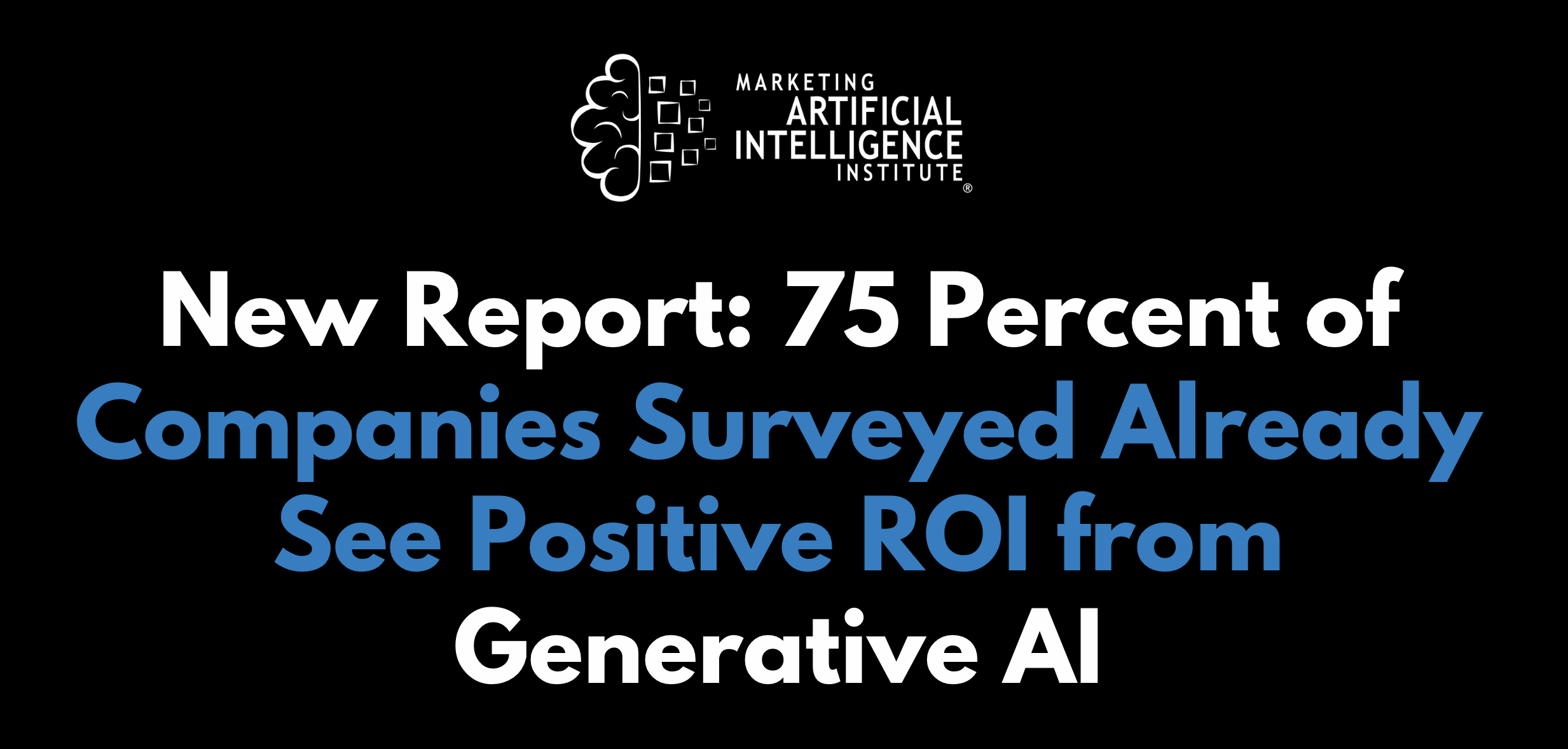Companies are getting results with generative AI, according to a new report by The Wharton School of the University of Pennsylvania.
The third-annual report, "Accountable Acceleration: Gen AI Fast-Tracks Into the Enterprise," tracked corporate AI adoption with a survey of about 800 senior decision-makers. It found that 75 percent of business leaders report a positive return on investment (ROI) from their AI investments. Fewer than 5 percent say returns have been negative.
The data also shows usage is surging: 46 percent of leaders now use generative AI daily (a sharp increase from last year), and 82 percent use it at least weekly. The most common uses are data analysis, document summarization, and editing.
This new data paints a very different picture from other reports that have dominated headlines, namely, a viral MIT report that said 95 percent of generative AI pilots are failing.
To understand why this Wharton data is so different and what it means for business leaders, I turned to SmarterX and Marketing AI Institute founder and CEO Paul Roetzer on Episode 178 of The Artificial Intelligence Show.
AI Budgets Increasing
Roetzer’s immediate takeaway? The Wharton study, conducted between June and July 2025 with a clear methodology is "legitimate research."
He contrasts this sharply with the 95 percent failure rate statistic that MIT found, which he thinks was based on flawed methodology.
This new data shows that investment is not only continuing but accelerating. The study found 88 percent of companies anticipate Gen AI budget increases, with 62 percent expecting increases of 10 percent or more.
Roetzer also highlighted one finding: "One third of Gen AI technology budgets are being allocated to internal R&D, which I thought was interesting and an indication that many enterprises are building custom capabilities for the future."
A Need for Human Talent and AI Training
While adoption and return on investment are high, the Wharton report pinpoints a major barrier: human capital.
The biggest challenges cited by leaders were recruiting talent with advanced generative AI technical skills (49 percent) and providing effective training programs (46 percent). A lack of training resources also emerged as a top barrier for the first time since they’ve been doing the report.
This data highlights a massive opportunity for anyone willing to step up and provide guidance.
A Responsibility to "Pull Others Along"
Roetzer noted that the people who are already learning AI, such as those actively following the space, are most likely ahead of other people. It’s important they take the lead with their peers and companies.
"You have to pull them along," Roetzer says. "We all kind of have this responsibility to figure this stuff out and then find ways to help our peers get through this."
The challenge is that many people are simply afraid or find AI too abstract, Roetzer said, so they never get started. But if they don’t start, they’ll be left behind.
"The future isn't going to go well for people who don't learn to embrace this stuff in a responsible way," he says.
The solution, according to Roetzer, is for internal champions to emerge and help drive the organization forward, translating the abstract into practical applications and overcoming the fear.
"We need those internal champions to help drive this forward," he said.
Mike Kaput
As Chief Content Officer, Mike Kaput uses content marketing, marketing strategy, and marketing technology to grow and scale traffic, leads, and revenue for Marketing AI Institute. Mike is the co-author of Marketing Artificial Intelligence: AI, Marketing and the Future of Business (Matt Holt Books, 2022). See Mike's full bio.


